RT27 CPCS Blue Card Renewal Mock Test with 106 Questions and Answers / A27 MEWP Mast Climber
£15.00 Original price was: £15.00.£9.95Current price is: £9.95.
Ace the A27 RT27 MEWP Mast Climber CPCS Blue Card Test with our Rigorous 106 Question Mock Practice – Your Ultimate Preparation for Success!
- Questions & Answers: based on the latest RT 27 M.E.W.P. Mast Climber – CPCS Renewal Test Revision FACTSHEET
- Categories: A27 MEWP Mast Climber
- Number of Multiple-choice Questions: 106
- Format: PDF
- Delivery time: Instant download after checkout
- Refunds: No refunds once downloaded, unless you ordered duplicates by mistake.
If there are any issues with your download, please email CardRenewalTest@gmail.com and we’ll send it ASAP
Master Your CPCS Blue Card Renewal with Our RT27 M.E.W.P. Mast Climber Mock Practice Test!
Why Choose Our Mock Practice Test for CPCS Blue Card Renewal?
Are you a Mobile Elevating Work Platform (MEWP) operator aiming to renew your CPCS blue card for another five years? If so, you’re in the right place! Our RT27 M.E.W.P. Mast Climber CPCS Blue Card Renewal Mock Practice Test is the perfect tool to help you prepare effectively and increase your chances of passing the renewal test with flying colors.
The Benefits of Our Mock Practice Test
Renewing your CPCS blue card is crucial for maintaining your status as a competent MEWP operator. Here’s why our mock practice test is the ideal resource to aid you in this process:
- Focused Preparation: Our mock test is tailored specifically to the latest NOCN CPCS RT27 M.E.W.P. Mast Climber factsheet, ensuring that you focus on the most relevant information for your renewal.
- Realistic Exam Experience: By practicing with our questions, you’ll get a feel for the actual exam format, question structure, and time constraints. This familiarity can significantly reduce stress on the day of the test.
- Comprehensive Coverage: We’ve compiled 106 multiple-choice questions covering key areas such as safety procedures, emergency protocols, and operational considerations. This comprehensive approach ensures that you’re well-prepared for any question that may come your way.
Who Can Benefit from Our Mock Practice Test?
- Expired CPCS Card Holders: If your CPCS card has expired, our mock practice test is an excellent starting point to refresh your knowledge before attempting the renewal test.
- Operators Who Have Previously Failed: For those who have faced challenges in the renewal test before, our mock test provides a targeted way to identify weak areas and strengthen your understanding.
- Operators who are taking the renewal test for the first time: In case you don’t want to take any chances 🙂
How to Pass the CPCS Blue Card Renewal Test
Achieving success in your CPCS blue card renewal test is a step-by-step process. Here’s your guide to mastering the renewal:
- Purchase Our Mock Practice Test: Start by acquiring our RT27 M.E.W.P. Mast Climber CPCS Blue Card Renewal Mock Practice Test from our website.
- Dedicated Study Time: Set aside dedicated time for focused study sessions, using the mock test as a primary resource.
- Identify Weak Areas: After taking the mock test, review your answers and pay special attention to areas where you may need additional study.
- Consult the Factsheet: Use our mock test in conjunction with the latest NOCN CPCS RT27 M.E.W.P. Mast Climber factsheet to reinforce your understanding of key concepts.
- Practice Regularly: Consistent practice is key to retaining information. Revisit the mock test questions regularly to ensure a deep understanding of the material.
Get ready to renew your CPCS blue card with confidence! Our mock practice test is the tool you need to ace the renewal test and continue your career as a competent MEWP operator. Purchase now and invest in your success!
Here are the main learning points from the RT27 MEWP Mast Climber Factsheet:
Preparation for Work (Preparation):
- A Mobile Elevating Work Platform (MEWP) mast climber is a working platform composed of bolted deck sections on a vertical mast, used for accessing heights in structures.
- The platform is attached to a vertical mast, usually fixed to a structure with ties. The common driving method is a rack and pinion system with the motor within the platform structure.
- Thorough pre-use checks, following the manufacturer’s requirements, are mandatory for all plant and equipment, including mast climbers.
- The operator’s manual, containing vital information, must be with the mast climber, and the machine should not be used without the specific manual for that model.
- Familiarisation training is essential for operators, in addition to basic training, as it is specific to the type being operated.
- Key checks on types with an operator include testing the emergency lowering system according to manufacturer’s recommendations.
- Functional checks on the lowering warning alarm and a visual pre-use check for chassis and stabilisers on freestanding units are necessary.
- After wet weather, a thorough check should be made, and the mast climber installer should be contacted if any issues are noted.
- All mast climbers should have safety or emergency-stop buttons checked before work starts. These buttons cut off lifting and lowering functions.
- Mast climbers are equipped with safety systems like limit switches, adjustable only by trained installation and maintenance staff.
Working Safely:
- Mast climbers have a maximum weight limit, crucial for calculating the load considering tools, materials, and people.
- Operators must consider the weight of materials removed at height, as they can overload the platform, especially if waterlogged.
- Weather conditions at different levels should be considered, including high wind speeds. The operator must know the maximum wind speed allowed and shut down operations accordingly.
- Gusts of wind or wind funnelling between buildings can exceed safe maximum, and operators should be cautious in such situations.
- In high winds, materials, waste, or debris could be blown over the side, posing a danger to the area below.
- When raising a platform, operators must ensure limbs of passengers are within the platform area to prevent injuries.
- In occupied buildings, operators need to account for open windows when raising or lowering the platform.
- Before lowering, operators must check for hazards or people below and maintain visibility during lowering.
- On single-masted units, even distribution of the load is crucial to maintaining platform balance.
Emergency Procedures:
- A rescue plan must be devised before using a mast climber in a new location, considering possible mechanical malfunctions or electrical failures.
- The rescue plan should be communicated to all personnel in the platform, and communication procedures between ground level and the platform should be established.
- On single-masted units, the emergency lowering process should allow a single person to safely lower the platform.
- On twin mast units, the emergency procedure may require two operators to simultaneously operate the emergency lowering system.
- Mast climbers are not designed for access and egress; operatives can only leave in emergency situations.
Working at Height and Overhead Working (Working at Height):
- Fall arrest equipment may be required in certain circumstances, necessitating established measures and the correct type of harness.
- The operating height of the platform must be considered when using fall arrest equipment.
- Fall arrest equipment must be secured only to approved points in the platform, not elsewhere, to prevent component failure.
- Securing fall arrest equipment to a structure external to the platform is not allowed. A retrieval procedure must be planned before work starts in case of a fall.
- An exclusion zone below the platform’s working area should be regularly checked to prevent injuries from falling objects.
- Additional measures, like netting around the platform, should be considered in areas with a lot of pedestrians.
1 review for RT27 CPCS Blue Card Renewal Mock Test with 106 Questions and Answers / A27 MEWP Mast Climber
Add a review Cancel reply
Related products
CPCS Blue Card Renewal Tests
RT05 CPCS Blue Card Renewal Mock Test with 105 Questions and Answers / A05 Dragline
CPCS Blue Card Renewal Tests
RT41 CPCS Blue Card Renewal Mock Test with 118 Questions and Answers / A41 Loader Compressor
CPCS Blue Card Renewal Tests
RT45 CPCS Blue Card Renewal Mock Test with 110 Questions and Answers / A 45,46,47,48 Piling Rig
CPCS Blue Card Renewal Tests
RT30 CPCS Blue Card Renewal Mock Test with 113 Questions and Answers / A30 Piling Rig Tripod
CPCS Blue Card Renewal Tests
RT23 CPCS Blue Card Renewal Mock Test with 125 Questions and Answers / A23 Skid Steer Loader
CPCS Blue Card Renewal Tests
CPCS Blue Card Renewal Tests
RT60 CPCS Blue Card Renewal Mock Test with 151 Questions and Answers / A60 Mobile Crane
CPCS Blue Card Renewal Tests
RT43 CPCS Blue Card Renewal Mock Test with 102 Questions and Answers / A43 Screener

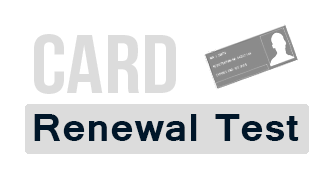



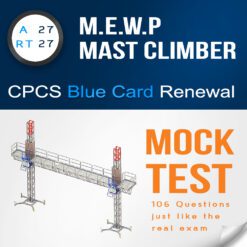


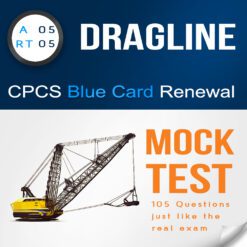
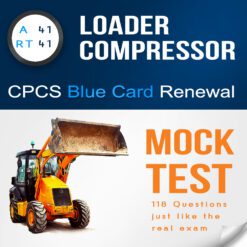
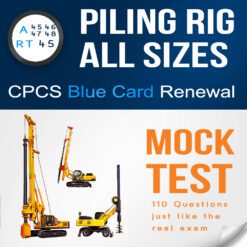
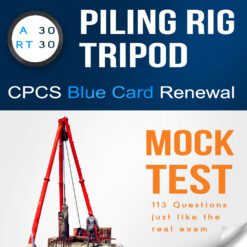
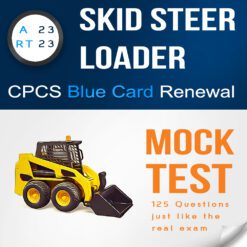
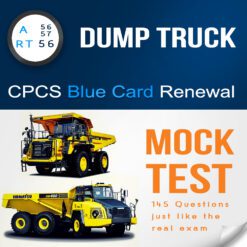
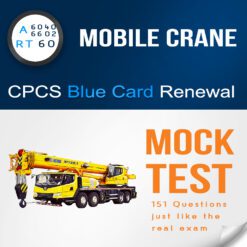

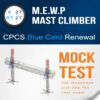
hani –
you’rea star mate!